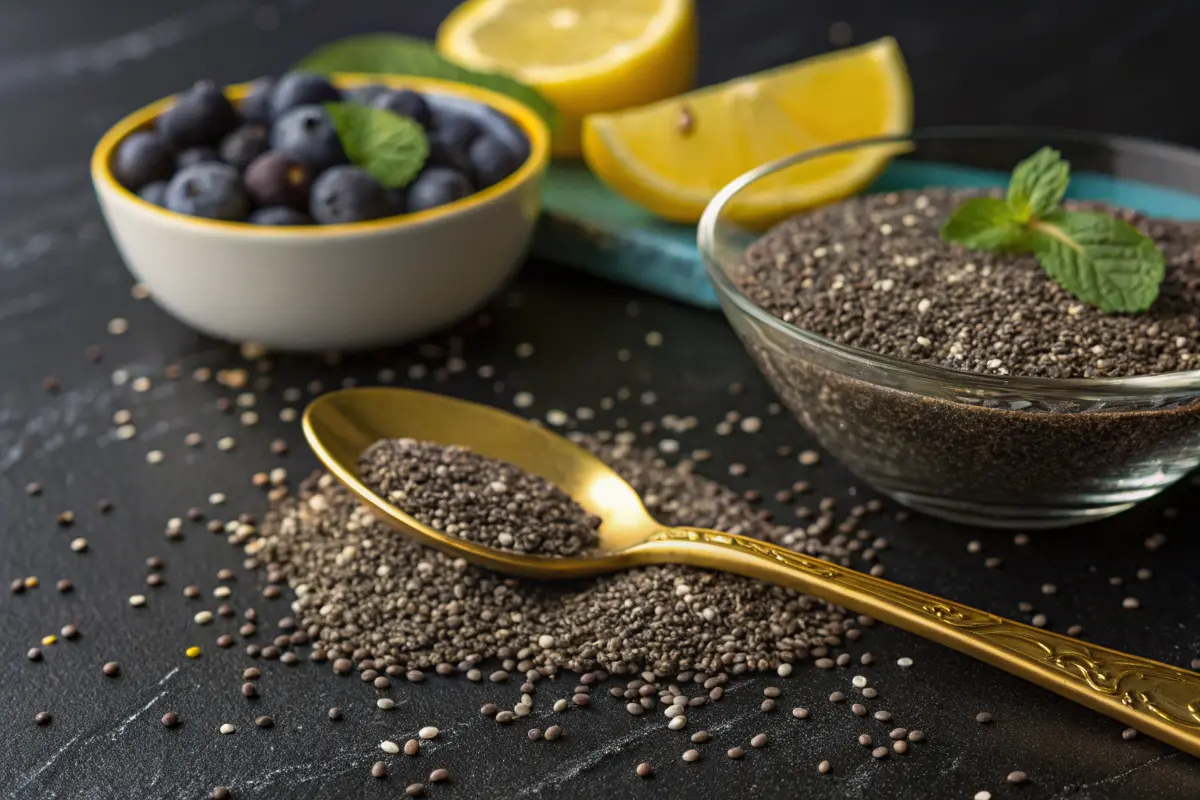Chia Pudding: A Gut-Friendly Superfood
Have you ever wondered what happens to your gut if you eat chia pudding? This creamy and nutritious dish is more than just a trendy snack—it can do wonders for your digestion. Packed with fiber, omega-3 fatty acids, and essential nutrients, chia pudding is known for supporting a healthy gut and improving how your digestive system works. Whether you enjoy it as a breakfast option or a mid-day snack, chia pudding is a delicious way to keep your gut happy.
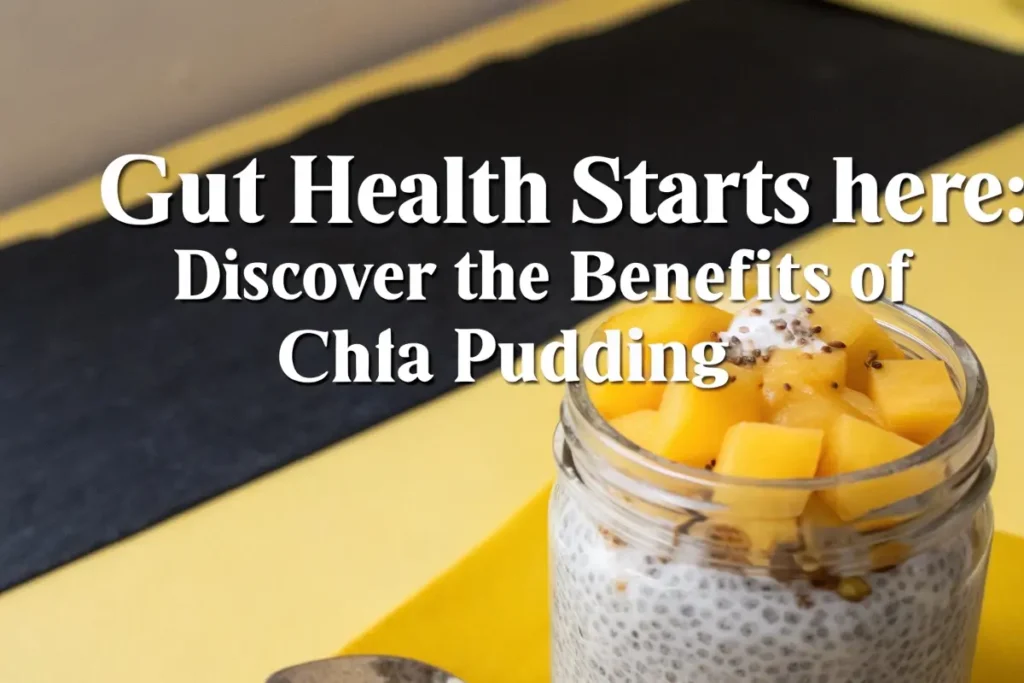
Why Chia Seeds Are Popular for Digestion
Chia seeds are small but incredibly powerful when it comes to gut health. They contain soluble fiber, which absorbs water and forms a gel-like consistency when mixed with liquid. This slows digestion and helps your body absorb nutrients more efficiently. Eating chia pudding also stabilizes blood sugar levels and keeps you feeling full for longer.
Many people choose chia pudding because it’s both easy to make and highly customizable. Whether you enjoy it with fresh fruits or spices like cinnamon, this dish is a perfect addition to a gut-friendly diet.
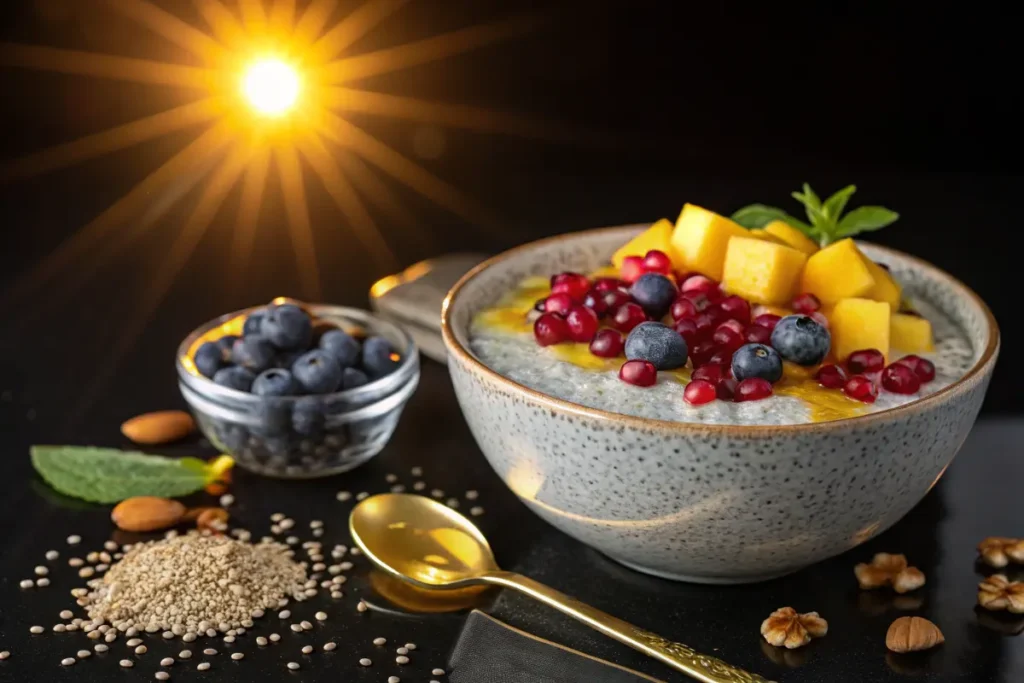
Nutritional Profile of Chia Seeds
Chia seeds may be tiny, but they are packed with nutrients that improve digestion. A single serving (about 2 tablespoons) provides:
- Fiber: 10 grams, which helps regulate bowel movements.
- Omega-3 fatty acids: These healthy fats reduce gut inflammation.
- Protein: Repairs tissues and supports overall digestive health.
- Magnesium: Keeps your digestive muscles relaxed and working smoothly.
When you eat chia pudding, these nutrients work together to support your gut and keep your digestive system functioning well.
The Digestive Benefits of Eating Chia Pudding
Have you ever wondered what happens to your gut if you eat chia pudding regularly? This nutrient-packed dish has several positive effects on your digestion. Chia pudding provides the fiber, hydration, and nutrients your body needs to keep your gut happy and healthy. Let’s explore the specific ways this superfood can support your digestive system.
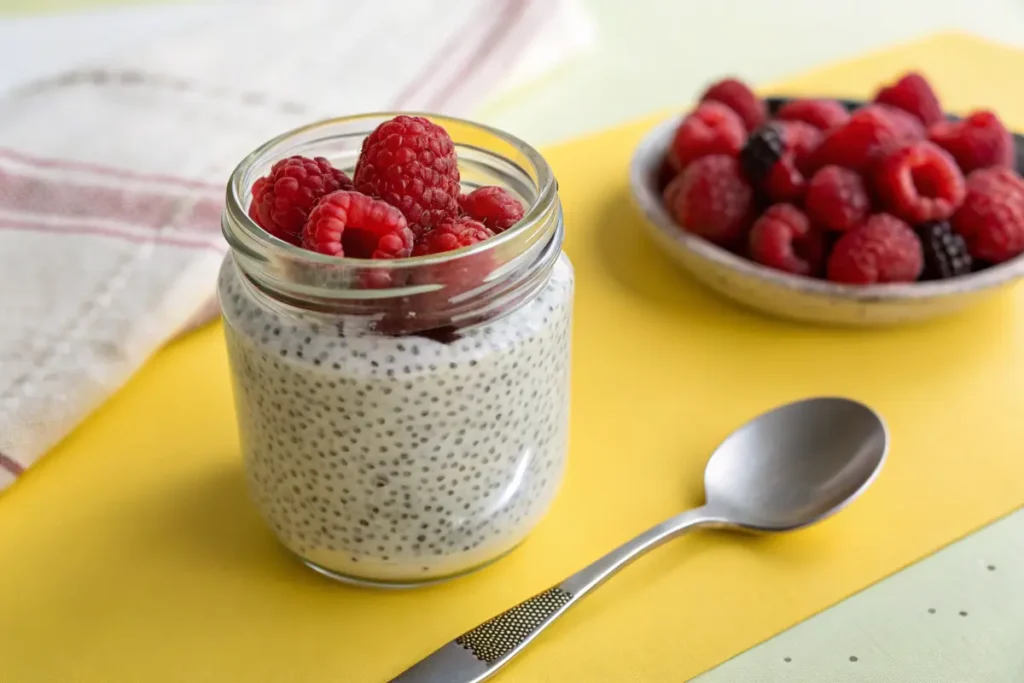
How Chia Seeds Improve Gut Health
Chia seeds work wonders for your gut because of their unique ability to absorb liquid. When you make chia pudding, the seeds soak up the liquid and form a gel-like consistency. This gel slows digestion, allowing your body more time to absorb nutrients. If you eat chia pudding often, your gut can process food more efficiently, leaving you feeling lighter and more energized.
Additionally, chia seeds contain both soluble fiber and insoluble fiber. Soluble fiber absorbs water, making it easier for your gut to break down food, while insoluble fiber adds bulk to your stool, improving regularity. This combination makes chia pudding a natural way to support healthy digestion.
The Role of Fiber in Chia Pudding
One of the key benefits of chia pudding is its high fiber content. Just two tablespoons of chia seeds provide about 10 grams of fiber, which is nearly half the daily recommendation for adults. Eating fiber-rich foods like chia pudding helps your gut stay active and balanced. Fiber feeds the good bacteria in your gut, promoting a healthier microbiome.
So, what happens to your gut if you eat chia pudding regularly? Fiber in chia seeds not only regulates bowel movements but also helps prevent constipation and bloating. With regular intake, you can enjoy better digestion and improved gut health.
Hydration and Gut Functionality
Did you know that chia pudding can also keep you hydrated? Chia seeds absorb up to 10 times their weight in liquid, which helps your digestive system stay hydrated. Proper hydration is essential for softening stools and promoting smooth bowel movements. When you eat chia pudding, you’re giving your gut a double benefit: hydration and fiber working together to keep things moving.
For example, pairing chia pudding with water-rich fruits like berries or melon enhances its hydrating effects, giving your gut even more support.
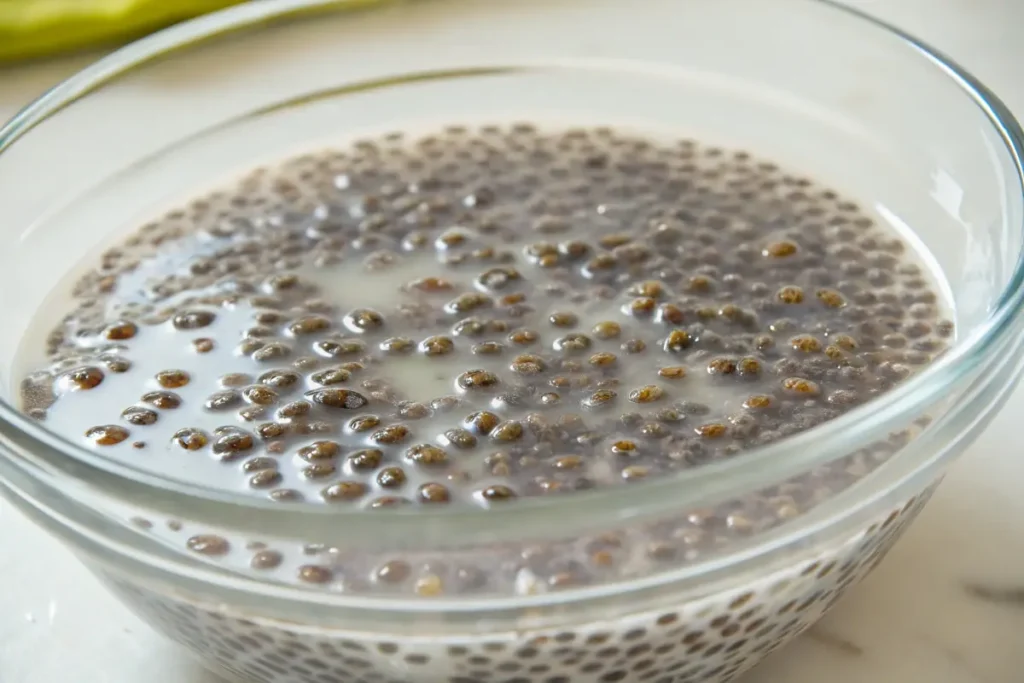
How Chia Pudding Impacts the Gut Microbiome
Have you ever considered what happens to your gut if you eat chia pudding? This nutritious superfood doesn’t just help with digestion—it also supports the delicate ecosystem of your gut microbiome. Your gut microbiome, which consists of trillions of bacteria, plays a crucial role in maintaining overall health. Let’s examine how chia pudding helps improve gut bacteria and reduces gut inflammation.

Prebiotics in Chia Seeds and Their Impact on Your Gut
Chia seeds act as a natural prebiotic, which means they feed the good bacteria in your gut. When you eat chia pudding, the soluble fiber in the seeds provides food for these beneficial bacteria, helping them grow and thrive. A healthy balance of good bacteria can improve digestion, boost immunity, and even enhance your mood.
The Effect of Chia Pudding on Good Gut Bacteria
One of the key benefits of eating chia pudding regularly is its ability to maintain and grow good gut bacteria. The fiber in chia seeds promotes the growth of bacteria that improve nutrient absorption and reduce harmful pathogens. When you include chia pudding in your diet, your gut microbiome becomes stronger, which leads to better overall gut health.
Reducing Gut Inflammation with Chia Pudding
Chia pudding is also known for its anti-inflammatory properties. The omega-3 fatty acids in chia seeds play an essential role in reducing inflammation in the gut lining. Inflammation in the gut can lead to digestive issues, bloating, and discomfort. By eating chia pudding consistently, you can soothe your gut and create a more balanced digestive system.
What Happens to Your Digestion After Eating Chia Pudding?
When you eat chia pudding, your digestive system gets a noticeable boost. This gut-friendly superfood is loaded with fiber and hydration, both of which play key roles in keeping your digestion smooth and regular. If you’re wondering what happens to your gut if you eat chia pudding, here are the specific ways it impacts your digestion.
Chia Pudding Enhances Bowel Movements Naturally
One of the first things you may notice after eating chia pudding is how it improves bowel movements. The soluble fiber in chia seeds absorbs water and forms a gel-like texture, which makes it easier for your body to pass stool. On the other hand, the insoluble fiber adds bulk to your stool, helping it move more efficiently through your digestive tract.
By including chia pudding in your diet, you may find that your digestion becomes more regular and less strained. For people dealing with constipation, chia pudding is an excellent natural remedy.
Relieving Constipation with Chia Pudding
Constipation can be a frustrating digestive issue, but eating chia pudding can help resolve it naturally. The high fiber content in chia seeds draws water into your intestines, softening stool and making it easier to pass. If you’ve ever wondered what happens to your gut if you eat chia pudding, the answer is simple: you’ll likely feel lighter, more comfortable, and less bloated.
Preventing Digestive Discomfort
Many processed snacks and sugary foods can upset your stomach, but chia pudding is gentle and soothing on your gut. Because chia seeds help maintain a healthy balance of bacteria in your gut, they can reduce bloating and other digestive discomforts. Plus, their gel-like consistency slows digestion, preventing spikes in blood sugar that can cause stomach issues.
For sensitive stomachs, chia pudding is a gentle and effective way to support gut health while avoiding unnecessary irritation.
Is Chia Pudding Good for Everyone’s Gut?
While chia pudding offers many digestive benefits, it’s important to ask: what happens to your gut if you eat chia pudding regularly? For most people, this nutritious dish improves gut health, but some may experience mild digestive issues. Let’s look at who can benefit the most and how to avoid any potential problems.
Common Digestive Issues with Chia Pudding
Although chia pudding is great for your gut, some people may experience mild bloating or gas after eating it. This usually happens when your body isn’t used to eating a lot of fiber. Since chia seeds are packed with fiber, consuming too much too quickly can overwhelm your digestive system.
To prevent this, start with small portions of chia pudding (about 1–2 tablespoons of seeds) and increase the amount gradually. This gives your body time to adjust to the extra fiber and reduces the risk of digestive discomfort.
How to Avoid Bloating and Gas After Eating Chia Pudding
If you’ve ever wondered what happens to your gut if you eat chia pudding and then feel bloated, it may be due to a lack of hydration. Chia seeds absorb a lot of water, so it’s important to drink plenty of fluids when you include them in your diet.
Additionally, make sure to let your chia pudding sit long enough to fully absorb the liquid before eating it. When the seeds are not properly hydrated, they can expand in your stomach, which may cause bloating or discomfort.
Tips for Sensitive Stomachs
For those with sensitive stomachs, chia pudding can still be a gut-friendly option with a few adjustments. First, try soaking the chia seeds overnight to ensure they are fully hydrated. Second, consider using almond milk or another light, plant-based liquid instead of heavier dairy products, which can be harder to digest.
Finally, pair your chia pudding with toppings like bananas or berries, which are gentle on the stomach and add extra nutrients to the dish. With these tips, even individuals with sensitive digestion can enjoy the benefits of chia pudding.
How to Make the Best Gut-Healing Chia Pudding
If you’re wondering what happens to your gut if you eat chia pudding, the answer often depends on how you prepare it. A properly made chia pudding can provide maximum gut-healing benefits while being gentle on your digestive system. By using the right ingredients and following simple tips, you can ensure your chia pudding helps your gut thrive.
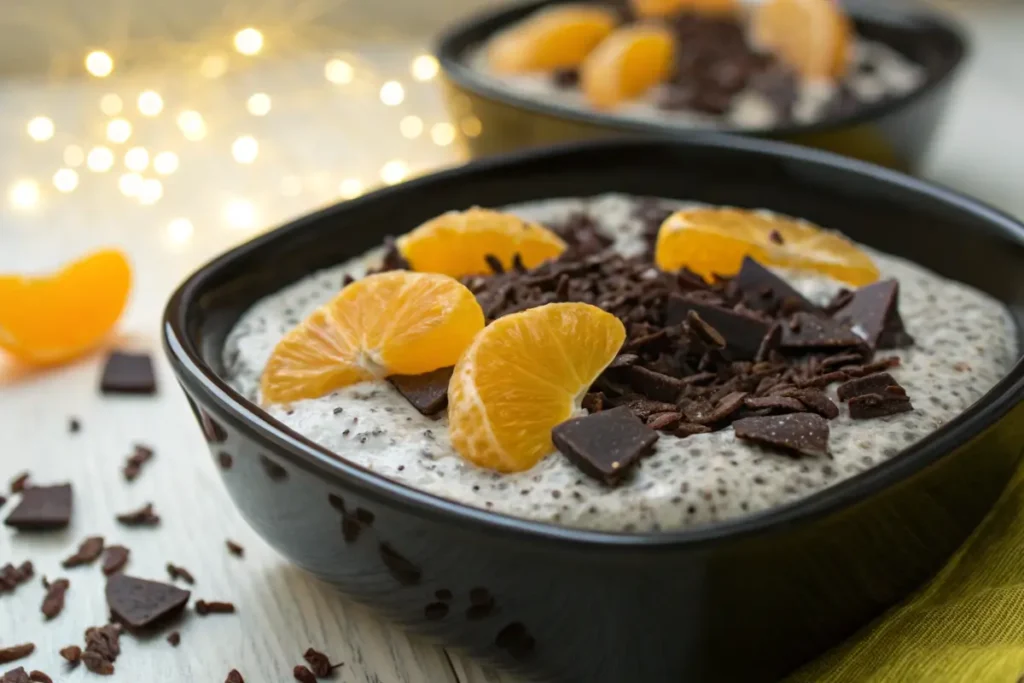
Adding Gut-Healing Ingredients
To make a gut-friendly chia pudding, start by choosing ingredients that are soothing for your digestive system. For the base, use liquids like almond milk, coconut water, or oat milk, which are easier to digest than regular milk. You can also mix in a small amount of honey or maple syrup for natural sweetness.
Top your chia pudding with foods that support gut health, like fresh berries, bananas, or probiotic-rich yogurt. These toppings not only add flavor but also enhance the pudding’s nutritional benefits. For an extra boost, sprinkle flaxseeds or a pinch of turmeric, both known for their anti-inflammatory properties.
Balancing the Fiber with Liquids
Chia pudding is loaded with fiber, which is great for your gut. However, too much fiber without enough liquid can cause bloating or discomfort. To avoid this, always ensure the seeds are fully hydrated. A good rule of thumb is to mix 3 tablespoons of chia seeds with 1 cup of liquid.
If the pudding seems too thick, add a little more liquid and stir well. Let it sit for at least 4 hours (or overnight) so the seeds absorb all the moisture. Proper hydration not only improves the texture but also helps your gut process the fiber more effectively.
Recipes for a Healthy Gut
Here are some easy chia pudding recipes designed to support your gut health:
- Berry and Yogurt Chia Pudding
Combine chia seeds with almond milk and top with fresh berries and a dollop of probiotic-rich yogurt. This recipe balances fiber with gut-boosting probiotics for better digestion. - Banana and Cinnamon Chia Pudding
Mix chia seeds with oat milk, add mashed banana, and sprinkle with cinnamon. Bananas are gentle on the stomach and help reduce bloating, while cinnamon adds flavor and promotes digestion. - Golden Turmeric Chia Pudding
Stir a pinch of turmeric and a drizzle of honey into your chia pudding base. Turmeric’s anti-inflammatory properties make this an excellent option for soothing your gut.
The Science Behind Chia Seeds and Gut Health
Have you ever wondered what happens to your gut if you eat chia pudding and why it’s so beneficial? The answer lies in the science behind chia seeds. These tiny seeds have unique properties that make them a powerhouse for digestive health. From their high fiber content to their anti-inflammatory nutrients, chia seeds are backed by research as one of the best foods for your gut.
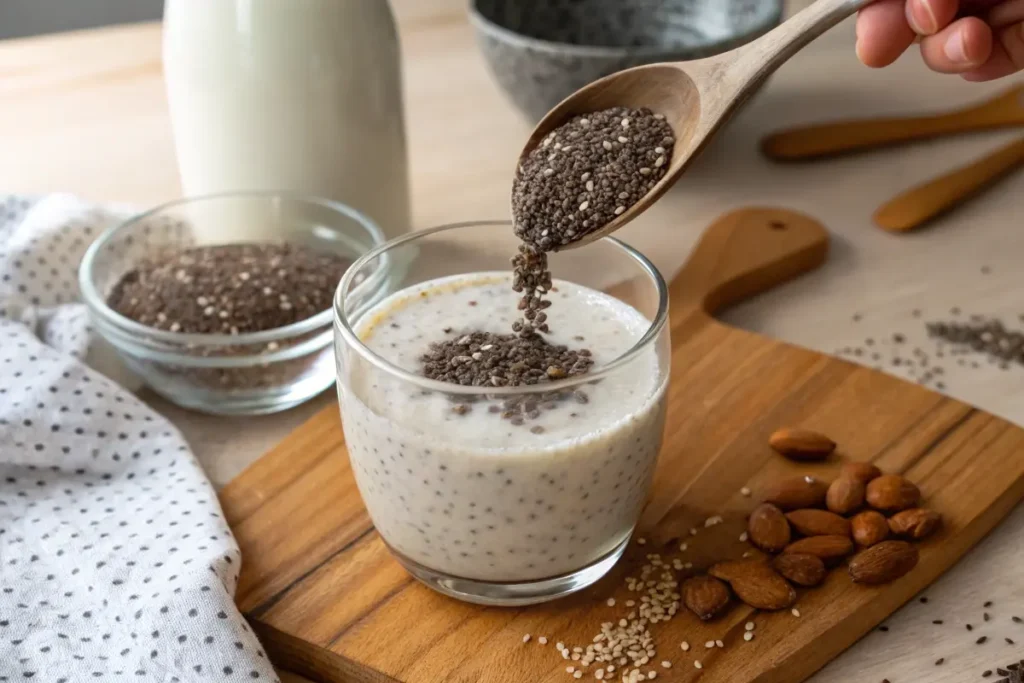
Studies on Fiber and Gut Health
Chia seeds are packed with soluble fiber, which plays a key role in maintaining gut health. When mixed with liquid, this fiber forms a gel-like consistency that slows digestion and feeds the good bacteria in your gut. Scientific studies have shown that a diet high in fiber improves digestion, promotes regular bowel movements, and reduces the risk of constipation.
If you eat chia pudding regularly, the fiber it provides can help keep your gut healthy, balanced, and functioning at its best.
Research on Omega-3s and Digestion
Chia seeds are one of the best plant-based sources of omega-3 fatty acids. These healthy fats don’t just support heart health—they also reduce inflammation in the gut. Chronic gut inflammation can lead to discomfort and digestive issues like bloating or gas. By eating chia pudding, you’re giving your body omega-3s that soothe your gut lining and promote better digestion.
Additionally, omega-3s are known to improve the health of the gut microbiome, creating an environment where good bacteria can thrive.
How Chia’s Gel-Like Texture Aids Digestion
The unique gel-like texture of chia seeds is more than just a fun consistency—it’s scientifically proven to support digestion. When you make chia pudding, the seeds absorb water and expand, making them easier to digest. This gel also helps move food smoothly through your digestive tract, reducing the chance of discomfort or bloating.
Because chia pudding is hydrating and full of nutrients, it can be a gentle and effective way to improve your digestion naturally.
When to Eat Chia Pudding for Optimal Gut Health
Timing can play an important role in what happens to your gut if you eat chia pudding. Eating it at the right time can help maximize its benefits for digestion and overall gut health. Whether you enjoy chia pudding as a breakfast, snack, or dessert, here’s how to make it work best for your gut.
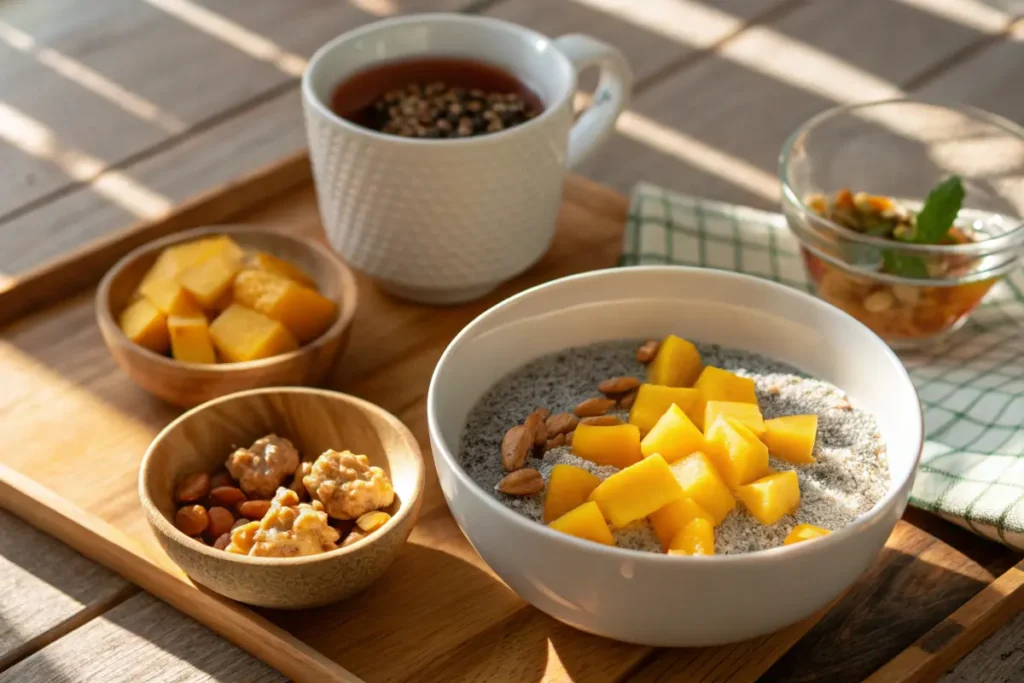
Eating Chia Pudding on an Empty Stomach
One of the best times to eat chia pudding is first thing in the morning on an empty stomach. When you start your day with chia pudding, the fiber helps stimulate digestion and prepares your gut for the meals ahead. Additionally, the omega-3 fatty acids and nutrients provide a steady release of energy, keeping you full and energized until your next meal.
If you’ve wondered what happens to your gut if you eat chia pudding in the morning, the answer is simple: it promotes regular digestion and jumpstarts your metabolism.
Pairing Chia Pudding with Other Foods
To enhance its gut-healing benefits, try pairing chia pudding with complementary foods. For example, adding fresh fruits like bananas or berries provides vitamins and antioxidants, while probiotic-rich yogurt adds healthy bacteria to your gut. These combinations can improve digestion and make chia pudding even more effective for gut health.
If you prefer eating chia pudding later in the day, pair it with a light meal or snack to balance your diet and avoid overloading your digestive system.
Chia Pudding as a Post-Meal Dessert
Chia pudding also works well as a dessert after lunch or dinner. Because it’s light and easy to digest, it can help you satisfy your sweet cravings without causing bloating or discomfort. The fiber in chia seeds slows sugar absorption, which helps stabilize your blood sugar levels after a meal.
For those who like dessert but want to avoid heavy or sugary options, chia pudding is a gut-friendly choice that won’t upset your stomach.
Creative Ways to Incorporate Chia Pudding for Gut Health
If you’re wondering what happens to your gut if you eat chia pudding, the benefits go beyond just eating it plain. With a little creativity, you can turn chia pudding into an exciting and versatile addition to your diet. By incorporating toppings, pairing it with gut-friendly foods, and experimenting with flavors, you’ll never get bored of this superfood.
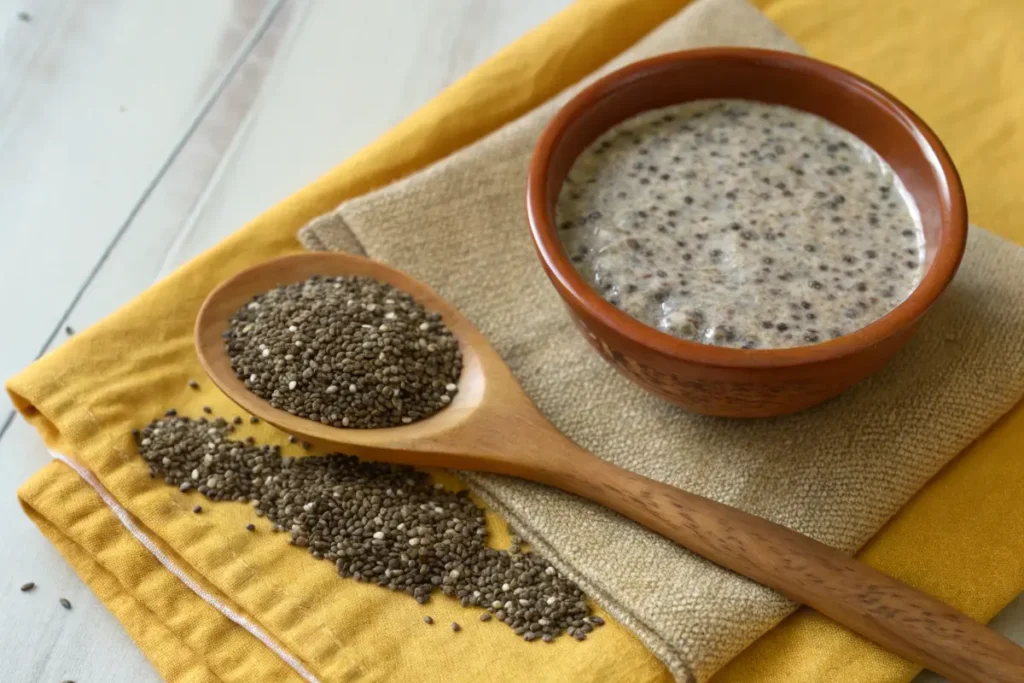
Adding Probiotic-Rich Toppings
One easy way to enhance your chia pudding is by adding toppings that support gut health. For example, a spoonful of probiotic-rich yogurt can boost the good bacteria in your digestive system. You can also add fermented foods like kefir or a sprinkle of sauerkraut for a surprising savory twist.
These toppings not only improve the flavor of your chia pudding but also enhance its ability to heal and maintain your gut health.
Pairing Chia Pudding with Fermented Foods
Fermented foods are packed with probiotics, which are essential for a healthy gut. When you pair chia pudding with foods like kimchi, miso soup, or pickled vegetables, you’re giving your gut a double dose of goodness.
For a balanced meal, consider starting with a small bowl of chia pudding followed by a side of fermented veggies. This combination works well to promote digestion and keep your gut microbiome thriving.
Experimenting with Flavors for Better Digestion
Chia pudding is incredibly versatile, so don’t be afraid to get creative with flavors. For instance, add anti-inflammatory spices like turmeric, ginger, or cinnamon to your chia pudding base. These spices are not only delicious but also help soothe your digestive system.
Another idea is to blend fresh fruits like papaya or pineapple into the liquid base before mixing in the chia seeds. Both fruits contain enzymes that aid digestion, making your chia pudding even more gut-friendly.
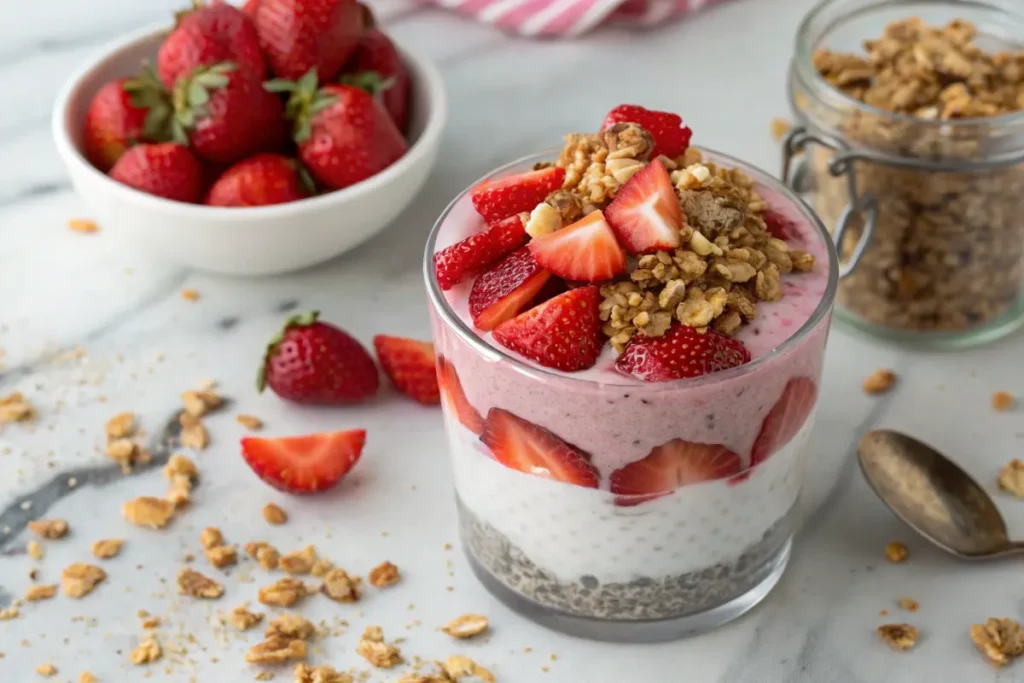
Conclusion: What Happens to Your Gut If You Eat Chia Pudding?
Chia pudding is more than just a tasty snack—it’s a superfood that can transform your gut health. When you eat chia pudding regularly, the high fiber content, omega-3 fatty acids, and hydrating properties work together to improve digestion, support a healthy gut microbiome, and relieve issues like constipation or bloating. Whether you eat it as a breakfast, snack, or dessert, chia pudding is a versatile and gut-friendly choice.
If you’re ready to enjoy all the digestive benefits of this superfood, check out this step-by-step chia seed pudding recipe for easy instructions on how to make it. For those curious about other gut-friendly foods, you might also like to learn whether cottage cheese is anti-inflammatory and how it can support your health.
Finally, if you enjoy exploring creamy desserts, compare the differences between rice pudding and cream of rice to decide which one works best for your taste and digestion.
By incorporating chia pudding into your diet and exploring other gut-friendly options, you’ll be taking an important step toward better digestive health and overall well-being.

